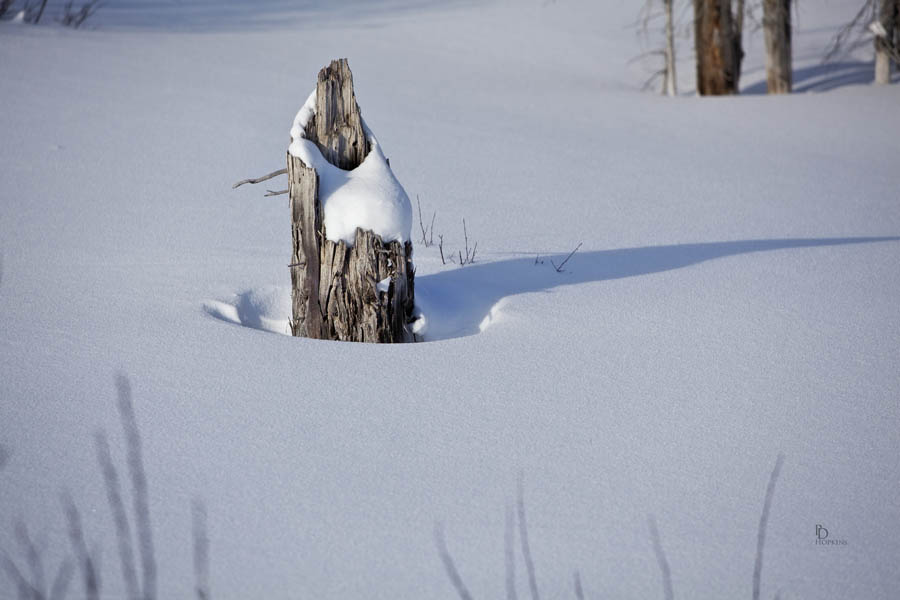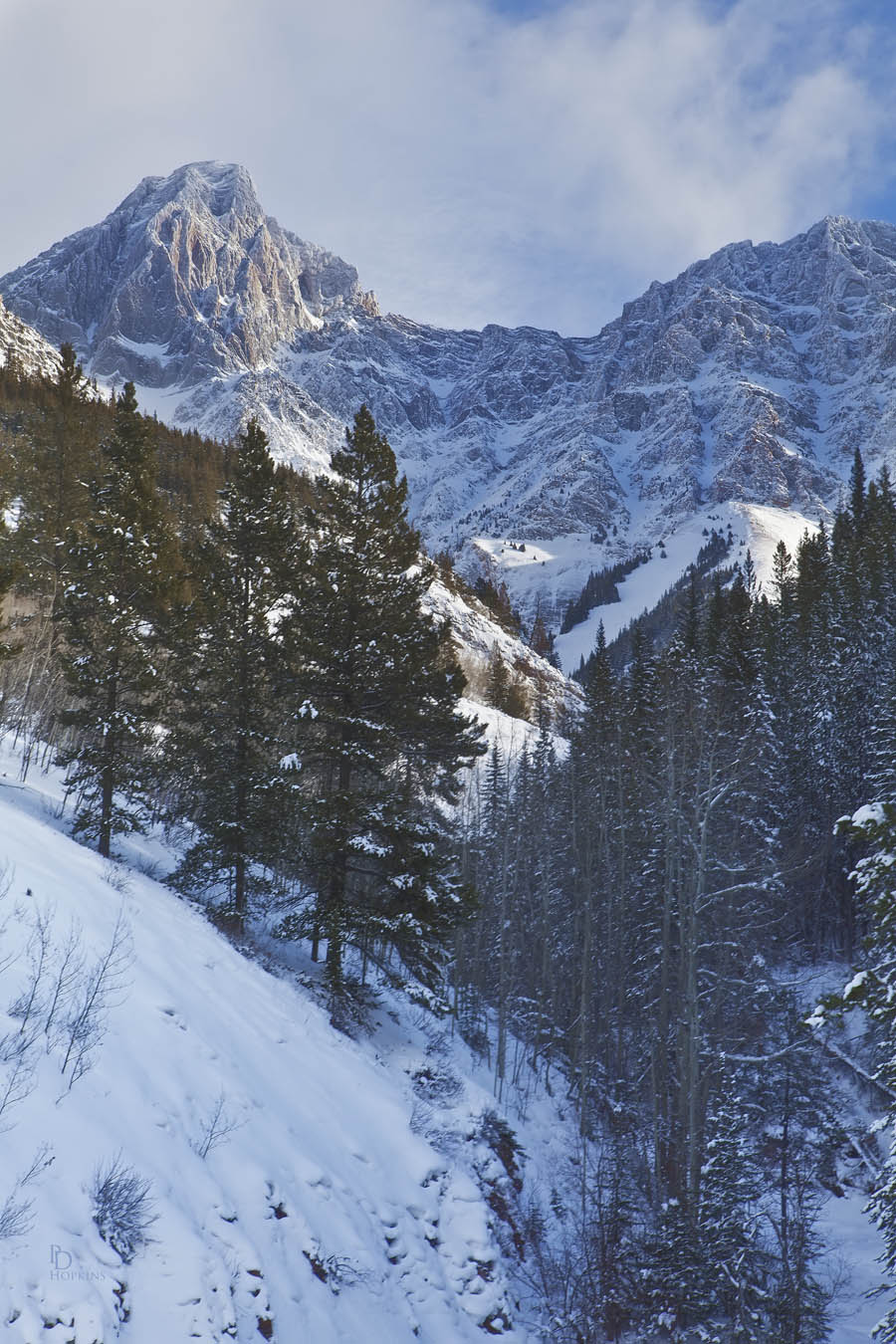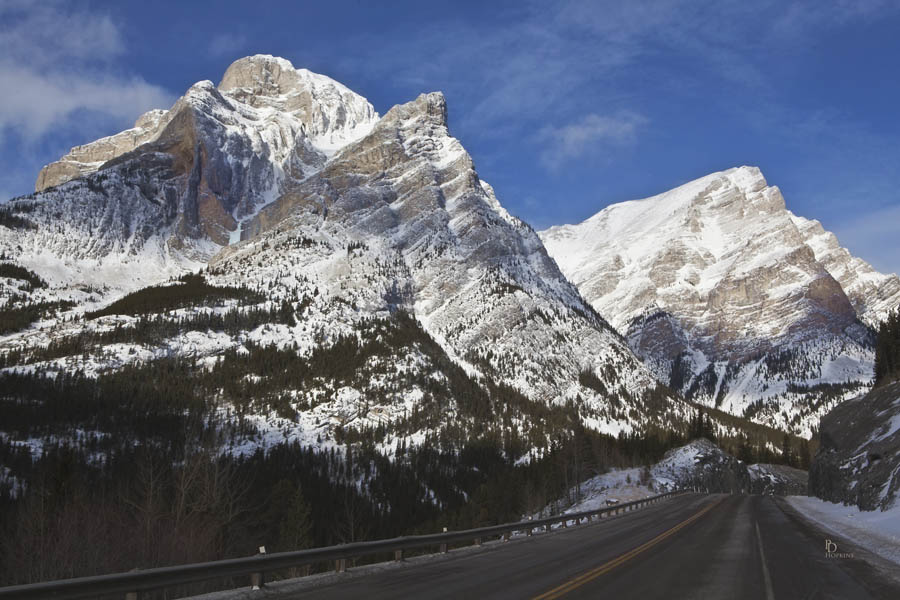On Sunday morning, I went out with friends and photographers, Howie Dingle and Joanne Young seeking good pictures in Kananaskis Country. It was a magnificent morning, just below freezing, sunny and ultra-clear. We drove down to the area of the Kananaskis Lakes, looking for areas of open water. Alas with recent temperatures being as low as they were and lots of snow, there was very little open water to be seen. Not a problem, there is always something else to see and photograph.
Having just turned around, returning in the direction of home, we spotted an open meadow that showed some promise. We stopped and spent a few minutes snapping pictures, primarily of some interesting stumps protruding from the snow. The light was excellent, creating some nice shadows on the snow and highlighting the snow atop the stumps. Credit goes to Joanne for sighting what proved to be a fertile area for pictures. Here’s one of my efforts.

This picture was taken from a distance of 20 m, using a telephoto lens at a focal length of 200 mm. With the aperture set at f4.5, the depth of field is very shallow. If you look carefully, you’ll see that with the lens focused on the stump, the foreground and background lose focus very quickly. That results from a combination of factors, the aperture, the distance from the subject and the focal length.. The benefit of the shallow DoF in this case is that attention is drawn to the subject, the stump. It stands out because it is so much sharper than it’s surroundings. The highlights in the snow also help draw attention to the subject.
Back on Highway 40 we fixed our attention primarily on the majestic, snow-covered peaks surrounding us on all sides. I took the next picture from the roadside, looking up Hood Creek to Mount Packenham.

Being a landscape with considerable depth, I wanted as much sharpness as possible throughout the image. That is achieved using a standard lens, with a smaller focal length (70 mm) and smaller aperture (f16.0). I focused the lens on the mountain itself because that’s where I wanted the image to be its sharpest. The distance to Mount Packenham is about 2.5 km. As you can see, the loss of focus in the foreground is hardly discernible.
The last picture for today was taken as we neared the end of our morning. It’s one of my favourite mountains to photograph, Mount Kidd. I photographed this one from the roadside as well, including the highway in an attempt to convey how close you get to some of these mountains as you travel through K-Country.

Mount Kidd is also distinctive by its appearance. At a height of 2958 metres (9,702 Feet) it is not particularly high but it has a massive volume. In the picture, you can see both the south (closer) and north peaks, spanning a distance of nearly 5 km. Looking at the surface of the south peak, you can see the work of shifts in the earth’s surface, beginning 165 million years ago. The rock layers are highly deformed, creating curved patterns, accentuated in winter by the snow. Geologists refer to these forms as “folds”, often located at the end of “thrust belts”. I prefer the more elegant phrasing, “scrunching”.
It was a good day. Good company, good light and more pictures than I can use. It was simply great just to be outdoors.

Great winter pics!